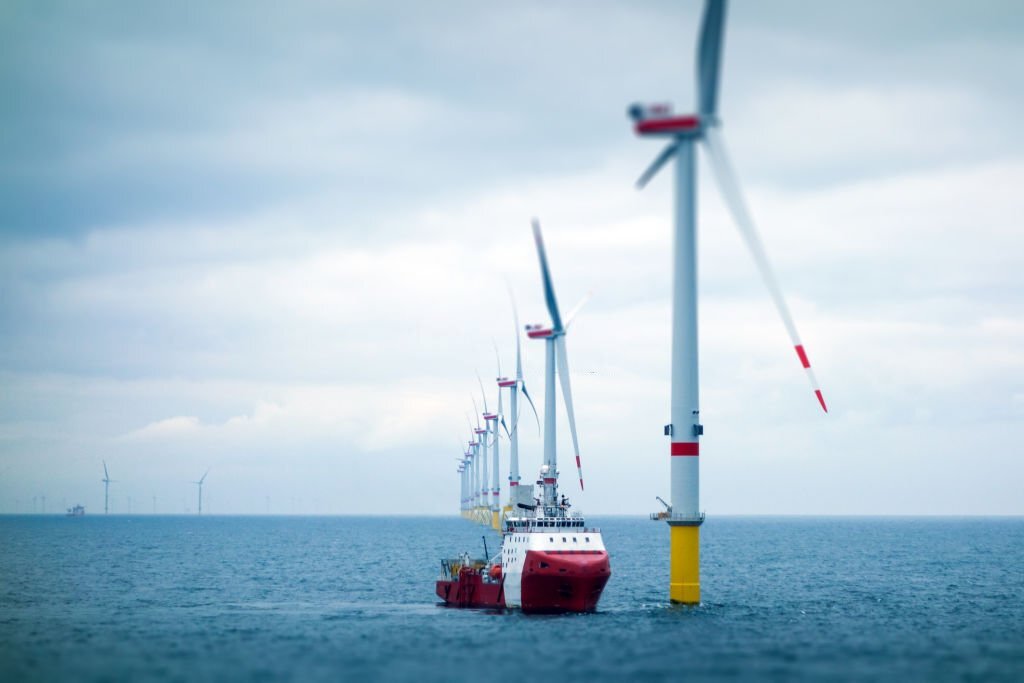
Introduction
In the pursuit of sustainable energy solutions, offshore wind farms have emerged as a powerful force in the renewable energy landscape. These vast arrays of wind turbines, situated in open waters, harness the power of the wind to generate electricity and contribute to reducing greenhouse gas emissions. However, the installation of offshore wind farms is a complex endeavor that requires cutting-edge marine equipment and technology. From specialized vessels designed for heavy lifting to innovative foundation systems that anchor wind turbines in the depths, marine equipment plays a pivotal role in making offshore wind a reality. This article explores the ways in which marine equipment contributes to offshore wind farm installations, highlighting the technologies that drive the growth of renewable energy.
Offshore Wind Farms: A Renewable Energy Frontier
- Harnessing Wind Power Offshore: Offshore wind farms leverage the consistent and powerful winds found at sea to generate clean electricity, addressing energy demands while reducing carbon emissions.
- Advantages of Offshore Wind: Offshore locations provide stronger and more consistent winds compared to onshore sites, enabling greater energy generation potential and minimizing visual impact.
Marine Equipment in Offshore Wind Farm Installations
- Specialized Installation Vessels
- Jack-Up Vessels: These self-elevating vessels are equipped with retractable legs that can be raised above the waterline, providing a stable platform for lifting and installing wind turbine components.
- Heavy-Lift Cranes: Vessels equipped with heavy-lift cranes have the capacity to hoist and position large turbine components, such as towers, nacelles, and blades.
- Cable-Laying Vessels: These vessels deploy and bury undersea cables that connect turbines to substations, enabling efficient energy transmission.
- Foundation Technology
- Monopile Foundations: Monopiles are large steel tubes driven into the seabed, providing support for wind turbine structures. They are a common choice for shallow-water installations.
- Jacket Foundations: Jacket structures consist of steel tubular members arranged in a lattice pattern. They are suitable for deeper waters and provide stability in challenging conditions.
- Floating Foundations: These innovative systems allow wind turbines to be anchored in deep waters using floating structures, expanding the potential for offshore wind farms.
- Pile Installation Equipment
- Pile Drivers: Hydraulic pile drivers are used to insert foundation piles into the seabed, ensuring secure anchoring and stability for wind turbine structures.
- Pile Vibro Hammers: Vibro hammers use vibrations to insert piles into the seabed efficiently, minimizing noise and environmental disturbance.
- Lifting and Positioning Systems
- Skidding Systems: Skidding systems move heavy components horizontally, facilitating their precise positioning on foundations before installation.
- Rotating Platforms: Rotating platforms on installation vessels enable the accurate alignment of turbine components, ensuring optimal assembly.
- Diving and ROV Technology
- Underwater Inspections: Divers and remotely operated vehicles (ROVs) conduct underwater surveys, ensuring foundation integrity and facilitating maintenance.
- Subsea Cable Installation: ROVs assist in laying and burying undersea cables, ensuring proper connections and efficient transmission of electricity.
Safety and Environmental Considerations
- Safety Measures
- Crew Safety: Rigorous safety protocols and personal protective equipment (PPE) are employed to ensure the well-being of crew members during installation operations.
- Weather Monitoring: Advanced weather forecasting and monitoring systems enable safe decision-making and the scheduling of operations during optimal weather windows.
- Environmental Impact Mitigation
- Sustainable Practices: Offshore wind farm installation operations adhere to sustainable practices to minimize disturbance to marine ecosystems and aquatic life.
- Protected Species Monitoring: Environmental surveys and monitoring are conducted to safeguard marine habitats and protect endangered species.
Challenges and Innovations
- Harsh Operating Environments
- Extreme Conditions: Offshore wind installations must contend with rough seas, strong currents, and adverse weather, necessitating robust equipment and engineering solutions.
- Foundation Advancements
- Suction Bucket Foundations: These innovative foundations use a vacuum effect to secure structures to the seabed, reducing installation time and environmental impact.
- Gravity-Based Foundations: Large concrete structures are used to anchor wind turbines in deep waters, providing stability without pile driving.
- Remote Operations and Automation
- Remote-Controlled Systems: The integration of remote-controlled equipment and autonomous technology reduces the need for extensive crew presence during installation.
- Digital Twin Technology: Digital twins create virtual models of wind farm components, enabling real-time monitoring, analysis, and predictive maintenance.
Success Stories: Notable Offshore Wind Installations
- Horns Rev 2 Wind Farm: The Horns Rev 2 project in Denmark showcases the utilization of specialized vessels and advanced foundation technology in offshore wind installations.
- Hywind Scotland: Hywind Scotland is the world’s first floating offshore wind farm, demonstrating the potential of floating foundations in deep waters.
The Future of Offshore Wind Installations
- Floating Wind Farms: Advancements in floating foundation technology are opening up new opportunities for offshore wind farms in deeper waters.
- Hybrid Energy Solutions: Offshore wind farms are increasingly integrated with energy storage systems and other renewable sources to create hybrid energy solutions.
- Advanced Monitoring and Maintenance: Ongoing advancements in monitoring technology and predictive maintenance practices will enhance the operational efficiency of offshore wind farms.
Conclusion
Offshore wind farm installations represent a pivotal step toward achieving a sustainable and cleaner energy future. The successful deployment of these renewable energy sources hinges on innovative marine equipment and technology that enable safe and efficient installation processes. From the specialized vessels that transport and assemble wind turbine components to the foundation systems that anchor them securely to the seabed, each piece of equipment contributes to the growth of offshore wind energy. As the world continues to transition toward more sustainable energy sources, the role of marine equipment in offshore wind farm installations will remain crucial in harnessing the power of the wind and propelling the renewable energy revolution forward.

